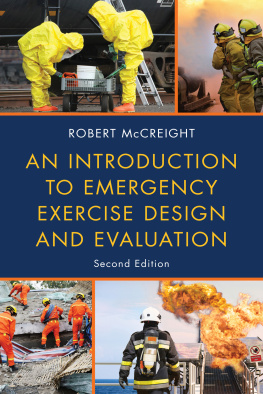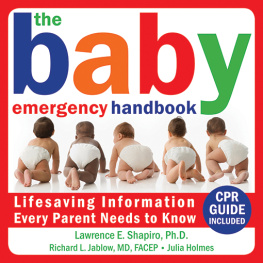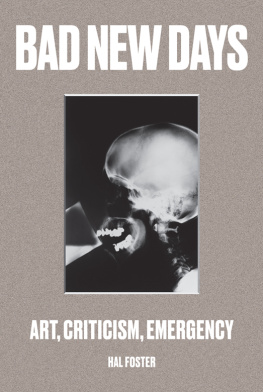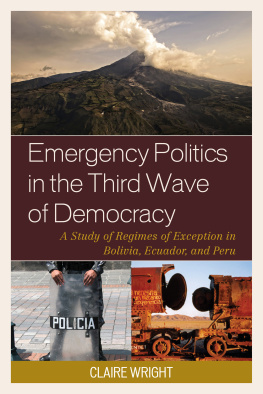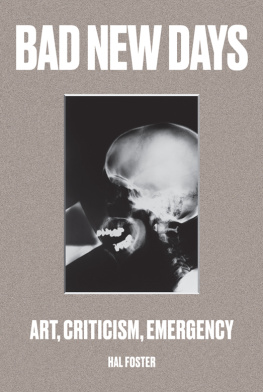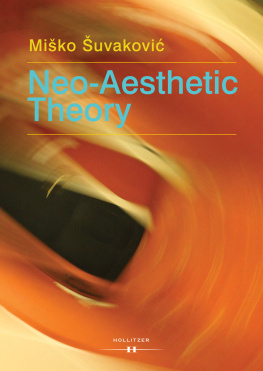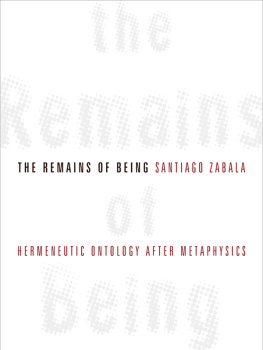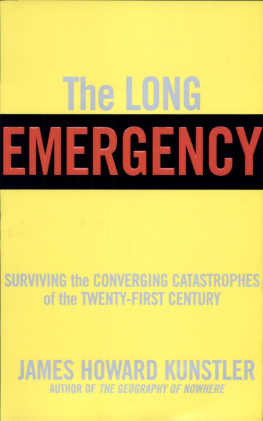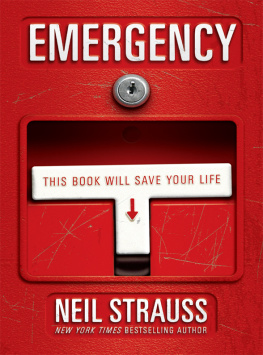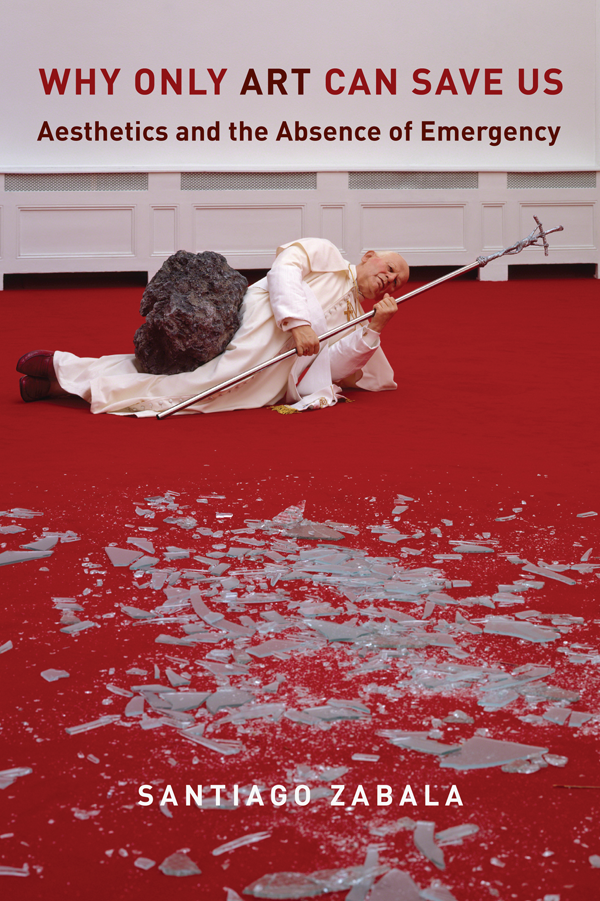Contents
Guide
Pagebreaks of the print version
WHY ONLY ART CAN SAVE US
WHY ONLY ART CAN SAVE US
Aesthetics and the Absence of Emergency
SANTIAGO ZABALA
COLUMBIA UNIVERSITY PRESS New York

Columbia University Press
Publishers Since 1893
New York Chichester, West Sussex
cup.columbia.edu
Copyright 2017 Columbia University Press
All artworks appear by courtesy of the artists.
All rights reserved
E-ISBN 978-0-231-54496-2
Library of Congress Cataloging-in-Publication Data
Names: Zabala, Santiago, 1975 author.
Title: Why only art can save us : aesthetics and the absence of emergency / Santiago Zabala.
Description: New York : Columbia University Press, 2017. | Includes bibliographical references and index.
Identifiers: LCCN 2017005582 (print) | LCCN 2017033677 (ebook) | ISBN 9780231544962 (e-book) | ISBN 9780231183482 (cloth : alk. paper)
Subjects: LCSH: Aesthetics. | ArtPhilosophy. | Heidegger, Martin, 18891976.
Classification: LCC BH39 (ebook) | LCC BH39 .Z33 2017 (print) | DDC 701/.17dc23
LC record available at https://lccn.loc.gov/2017005582
A Columbia University Press E-book.
CUP would be pleased to hear about your reading experience with this e-book at .
Cover image: Maurizio Cattelan, La Nona Ora , 1999. Polyester resin, painted wax, human hair, fabric, clothing, accessories, stone and carpet. Dimensions variable.
Installation view: Kunsthalle Basel, Maurizio Cattelan, Oct. 16Nov. 21.
Photo: Attilio Maranzano. Courtesy, Maurizio Cattelans Archive.
Book and cover design: Chang Jae Lee
What I admire in Charles Peirce and Martin Heidegger is that they have sought to liberate aesthetics from its traditional preoccupation with beauty, and beautys traditional limitation to calm detachmentand at the same time to situate the beauty as part of the ontology of being human.
Arthur C. Danto, What Art Is
Critical art is an art that aims to produce a new perception of the world, and therefore to create a commitment to its transformation. This schema, very simple in appearance, is actually the conjunction of three processes. First, the production of a sensory form of strangeness; second, the development of an awareness of the reason for that strangeness; and third, a mobilization of individuals as a result of that awareness.
Jacques Rancire, Dissensus
The outcome of recent philosophical hermeneutics has been the recovery of the truth claim of art, to use Hans-Georg Gadamers expression. This recovery, in itself, is fundamentally polemical toward a large part of the twentieth centurys philosophical aesthetics, whose inclination has been to redefine art by excluding its theoretical or practical bearing or, at best, by assigning to art a position of subordination according to which, even though art belongs to the field of truth, it is the task of other activities to take cognizance of the truth that art represents, by including it into a perspective that is vaster, more comprehensive, and therefore truer.
Gianni Vattimo, Arts Claim to Truth
CONTENTS
The image I have chosen as the cover image for this book is The Ninth Hour , a sculpture by the Italian artist Maurizio Cattelan that represents Pope John Paul II lying on the ground after being struck by a meteorite. The sculptures title alludes to the ninth hour of darkness that fell upon all the land when Christ cried out Eli, Eli, lema sabachthani ?My God, my God, why have you forsaken me? This alludes to this books title, which paraphrases Martin Heideggers famous statement that only a God can still save us when he was asked whether we could still have any influence now that we are so overpowered by technology. Heidegger alludes not to Gods representative on earth, as portrayed in Cattelans work, but rather the absence of Being, which in our technological world has become the essential emergency. The goal of this book is to thrust us into this emergency as it is revealed through works of art.
In line with the hermeneutic ontology I exposed in The Remains of Being (2009), this book aims to show how contemporary art, like communism (which was the theme of my previous book, Hermeneutic Communism [2011], coauthored with Gianni Vattimo), is another realm where the remains of Being are disclosed, that is, where existence takes place. In a world where, as Heidegger stated, the only emergency has become the lack of a sense of emergency, arts alterations of reality disclose this emergency and demand a different aesthetics, one of emergency.
While some may consider this aesthetic theory a simple contribution to the discipline begun by Alexander Baumgarten in 1735 and since developed by Theodore Adorno, Julia Kristeva, and many others, its primary aim is ontological, that is, to specify how Being and existence (for several contemporary artists such as Jennifer Karady, David Foster Wallace, and others) are no longer givens but are rather the points of departure to overcome oblivion or annihilation. Contemplation and beauty in contemporary art have not only been replaced by interpretations and interventions but also turn into an invitation to take a stance in favor of the remains of Being, that is, to become existentially involved for the sake of the salvation of the weak.
The book is divided into three chapters, each of which responds to the others; that is, while the last chapter, Emergency Aesthetics, outlines how to answer (through hermeneutics) the ontological call of art in the twenty-fist century, the second chapter responds to the Emergency of Aesthetics that we begin with. Given that each chapter responds to the one before, the reader is invited to read the book forward or backward as long as the works of art considered are interpreted as representing the possibility of salvation from metaphysics, that is, as revealing a new aesthetics of emergency.
Once again, the encouragement, suggestions, and help of Michael Haskell, Wendy Lochner, and Gianni Vattimo have been crucial to me in completing this book. I owe them more than I can express.
My conversations and correspondence with Arne de Boever, Pablo Cardoso, Carmelo Dotolo, Rob Fellman, Jonathan Gilmore, Arianna Letizia, Silvia Mazzini, Richard Polt, Ugo Ugazio, Martin Woessner, and Floriano von Arx have enriched this book not only philosophically but also aesthetically. I must also thank all the artists (Nle Azevedo, Mandy Barker, Jota Castro, Maurizio Cattelan, Jane Frere, Alfredo Jaar, Jennifer Karady, kennardphillipps, Peter McFarlane, Filippo Minelli, Michael Sailstorfer, Hema Upadhyay, and Wang Zhiyuan), who allowed us to reproduce their works of art in this book. Thank you all very much.
This book is for Mauro Piola, who saved so many of us.
Yet from where does the emergency of the future of philosophy come? Must not philosophy itselfin the act of beginningfirst awaken this emergency? Such emergency stands on this side of misery and grief, which always roam merely in some corner of established beings and of their truth.
Heidegger, Contributions to Philosophy (Of the Event)
Since Martin Heidegger said that only a God can still save us in a legendary interview with Der Spiegel , many have interpreted the word God too literally.
It seems as if art could offer a possibility of salvation not only from the ontic world but also from the metaphysical implications of Heideggers idea, given the different events of truth he lists. We have reached a point, according to Heidegger,


